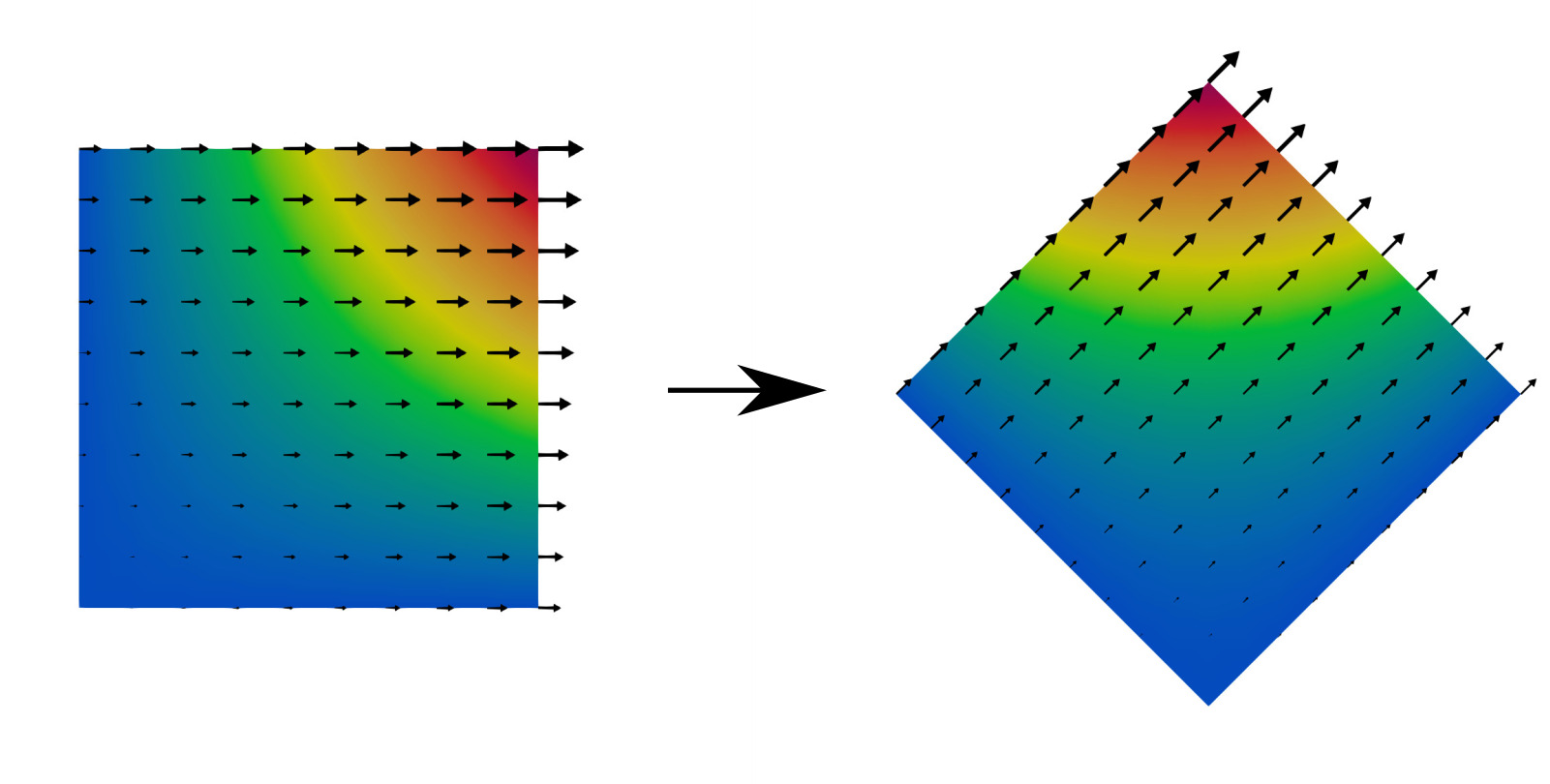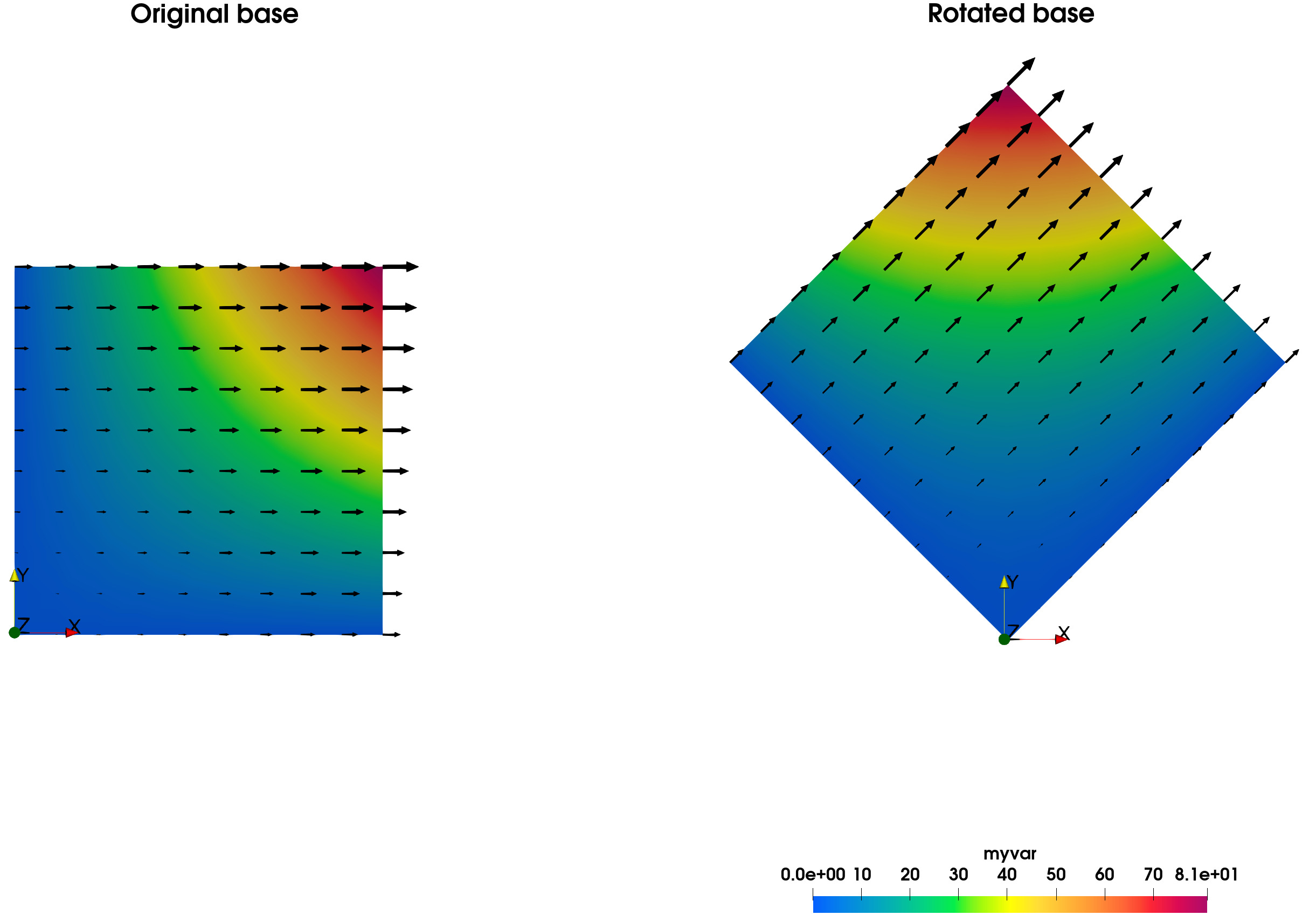Rotation¶

Description¶
Rotates the geometry and the vector variables in it.
For two-dimensional bases, a rotation by a given angle is done from the first axis to the second axis in the coordinate system.
For three-dimensional bases, a rotation by a given angle around a given axis direction is performed using the right hand rule.
Parameters¶
- base:
Base The input base to be rotated.
- base:
- coordinates: list(str), default= None
The variable names that define the set of coordinates. The coordinate system must be the cartesian coordinate system. If None the internal base coordinate system is used.
- angle: int or float
Angle of rotation in radians.
- axis: list(float), default= None
The axis of rotation (only for three-dimensional bases).
- vectors: list(list(str)), default= []
A list of lists containing name the components of the vectors to be rotated. The components must be specified in the same order as the coordinate keyword.
- memory_mode: bool, default= False
If True, the modifications are done directly on the input base to limit memory usage. If False, a new base is created.
Preconditions¶
The base must be in the Cartesian system of coordinates.
The base must be either two-dimensional or three-dimensional.
If the base is two-dimensional, the axis keyword must not be specified.
If the base is three-dimensional, both the angle and axis keywords are needed.
Postconditions¶
If memory_mode = False, the input base remains unchanged and the output base has the same structure as the input base. If memory_mode = True, the input base is modified in-place and the returned base is the same object as the input base.
Example¶
The following example shows how to rotate a base by an angle of 45 degrees around the y axis, rotating also the velocity vector [u, v, w].
import antares
myt = antares.Treatment('rotation')
myt['base'] = base
myt['coordinates'] = ['x', 'y', 'z']
myt['axis'] = [0, 1, 0]
myt['angle'] = np.pi / 4
myt['vectors'] = [ ['u', 'v', 'w'] ]
rotated_base = myt.execute()
Main functions¶
Example¶
The following examples creates a 2D structured base with a scalar and a vector variable and it uses the rotation treatment to rotate the base by 45 degrees.
import antares
import numpy as np
import os
output_folder = os.path.join("OUTPUT", "TreatmentRotation")
os.makedirs(output_folder, exist_ok=True)
X, Y = np.mgrid[0:10, 0:10]
# Create base to translate
base = antares.Base()
base.init()
base[0][0]['x'] = X
base[0][0]['y'] = Y
base[0][0]['myvar'] = X*Y # create a dummy variable
base[0][0]['myvec_x'] = X+Y # create a vector variable (x component)
base[0][0]['myvec_y'] = np.zeros_like(X) # create a vector variable (y component)
base.coordinate_names = ['x', 'y']
# Dump base to rotate
w = antares.Writer('hdf_antares')
w['base'] = base
w['filename'] = os.path.join(output_folder, 'base_to_rotate')
w.dump()
# Apply rotation treatment
rotation = antares.Treatment('rotation')
rotation['base'] = base
rotation['angle'] = np.pi / 4
rotation['vectors'] = [ ['myvec_x', 'myvec_y'] ]
rotated_base = rotation.execute()
# Dump result
w = antares.Writer('hdf_antares')
w['base'] = rotated_base
w['filename'] = os.path.join(output_folder, 'rotated_base')
w.dump()

